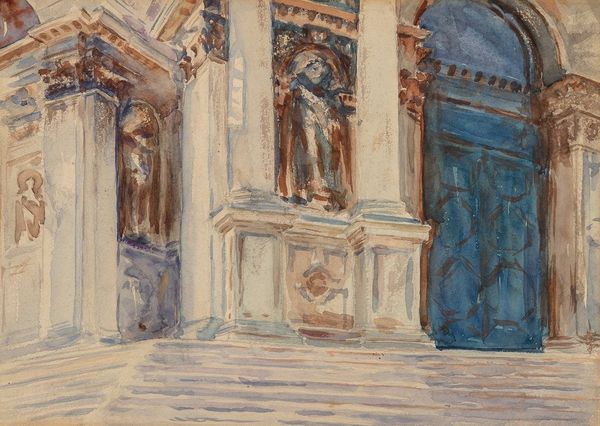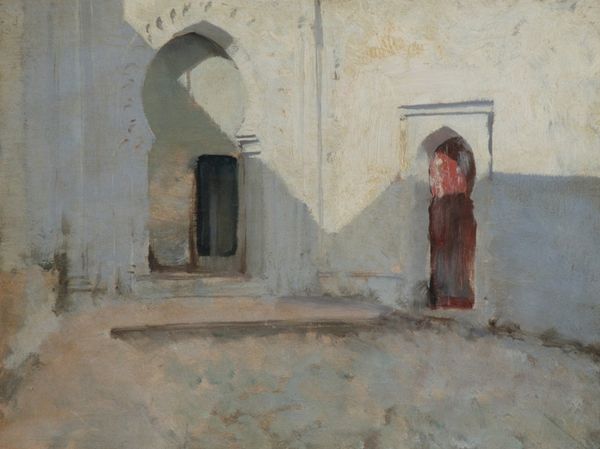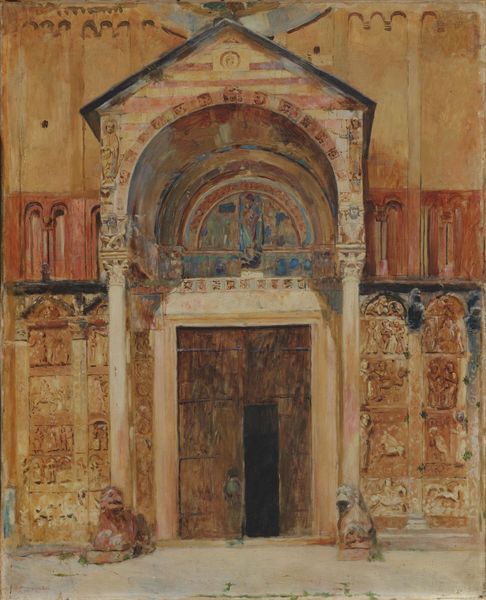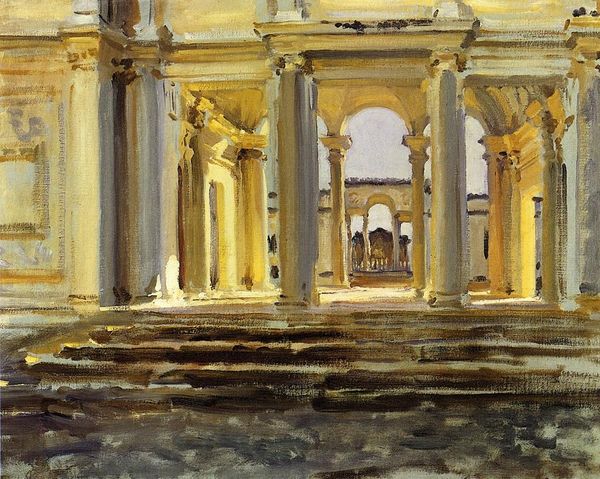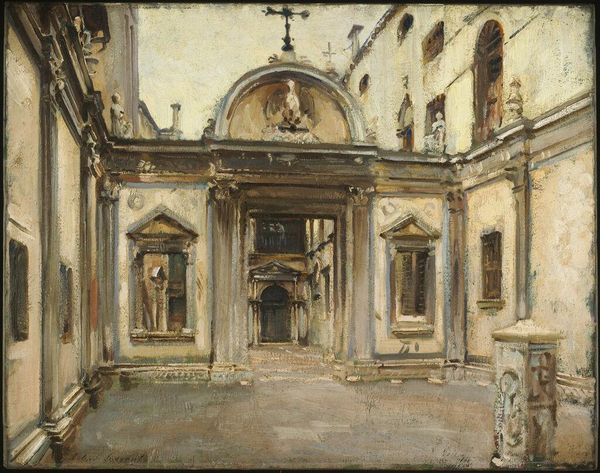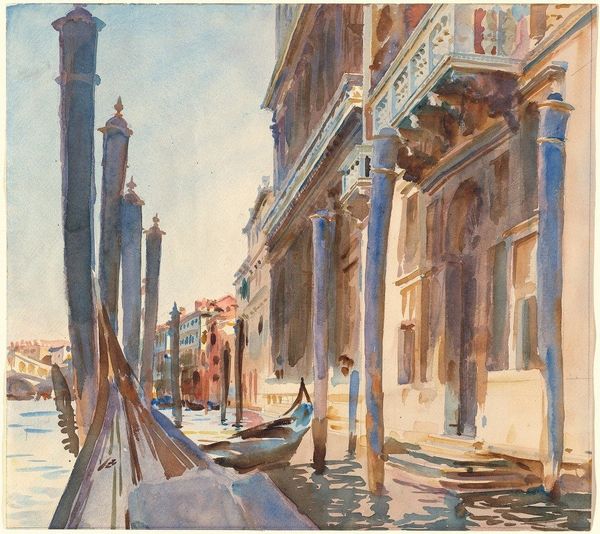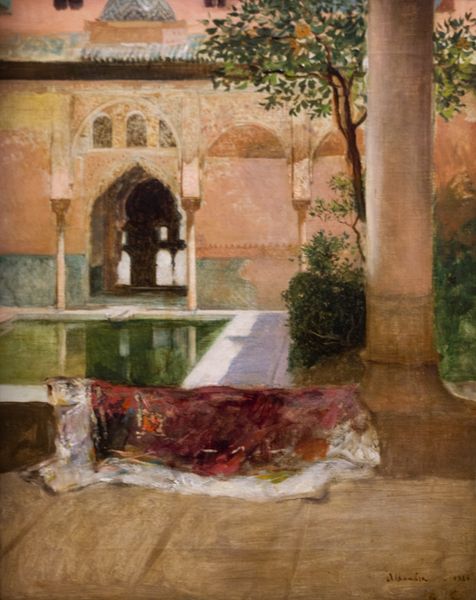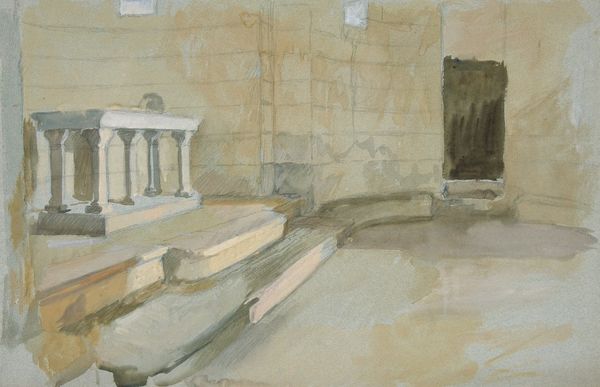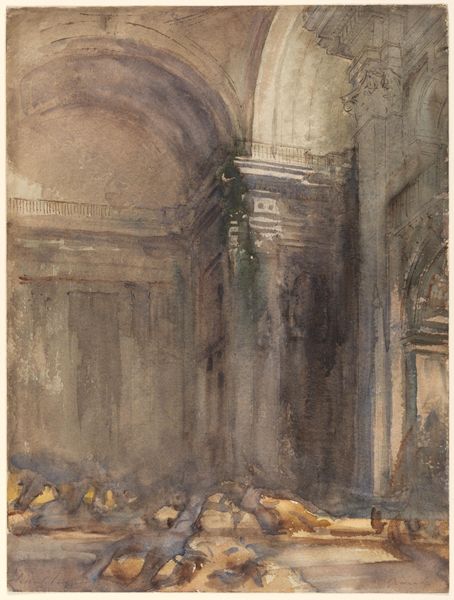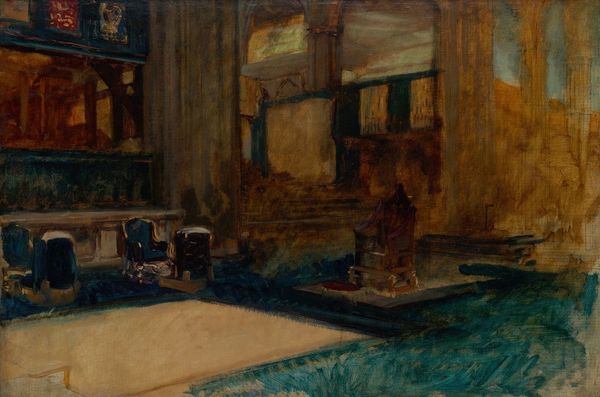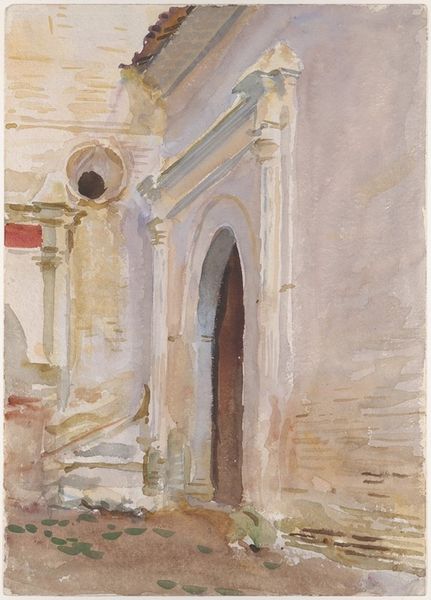
Copyright: Public Domain: Artvee
Editor: Here we have John Singer Sargent’s “Pavement,” painted around 1891. It's an oil painting, and I'm struck by the cool tones and the contrast between the bright courtyard and the shadowed doorway. What stands out to you in this piece? Curator: I see a powerful dialogue between light and shadow, yes, but also between cultures and historical memory. The pavement itself, with its mosaic patterns, speaks of ancient civilizations, perhaps Roman or Byzantine, overlaid with the architecture of a more recent, likely Islamic, influence. Do you see how Sargent uses light to almost sanctify the space? Editor: I do. It’s as if the light itself is imbued with historical weight. The cool palette is also a surprise—less ‘sunny’ than I’d expect. Curator: Precisely! That cool light isn’t merely descriptive; it evokes a specific emotional resonance. Sargent seems to be painting a feeling, a sense of place laden with centuries of human experience. The patterns on the ground suggest stories lived, empires risen and fallen, faiths practiced. What stories might these surfaces tell us? Editor: It's fascinating to consider how these visual elements act almost as a cultural palimpsest. I hadn’t considered how the artist intentionally invites you to imagine histories upon histories… Curator: It's this very layering, the superimposition of symbol upon symbol, that gives “Pavement” its enduring power. Sargent doesn't just show us a scene; he offers us a meditation on time, memory, and the silent language of cultural exchange. Editor: I see it now; I had only thought it to be just a study of light and composition! This has truly deepened my appreciation for how visual art encodes meaning.
Comments
No comments
Be the first to comment and join the conversation on the ultimate creative platform.
